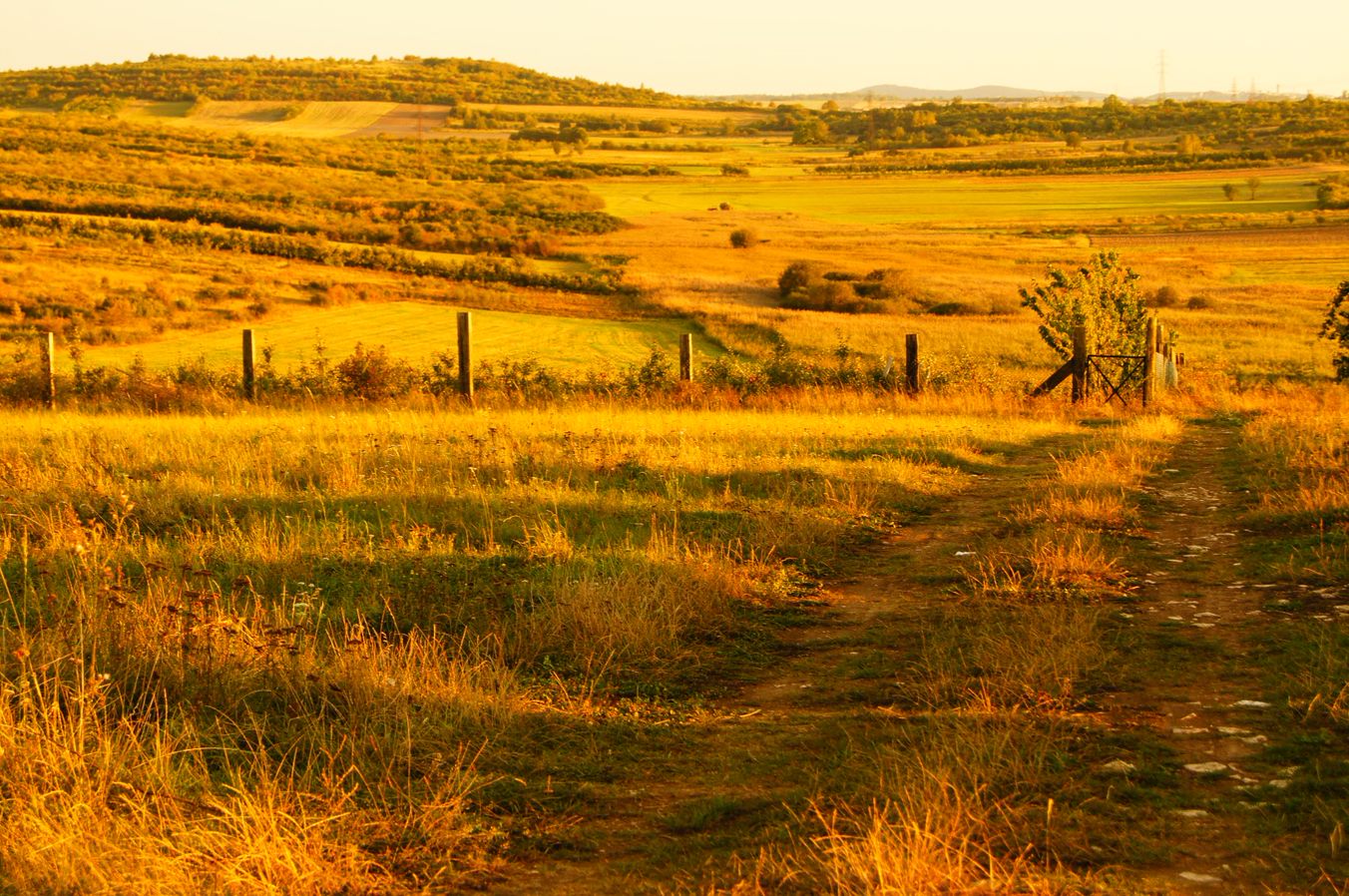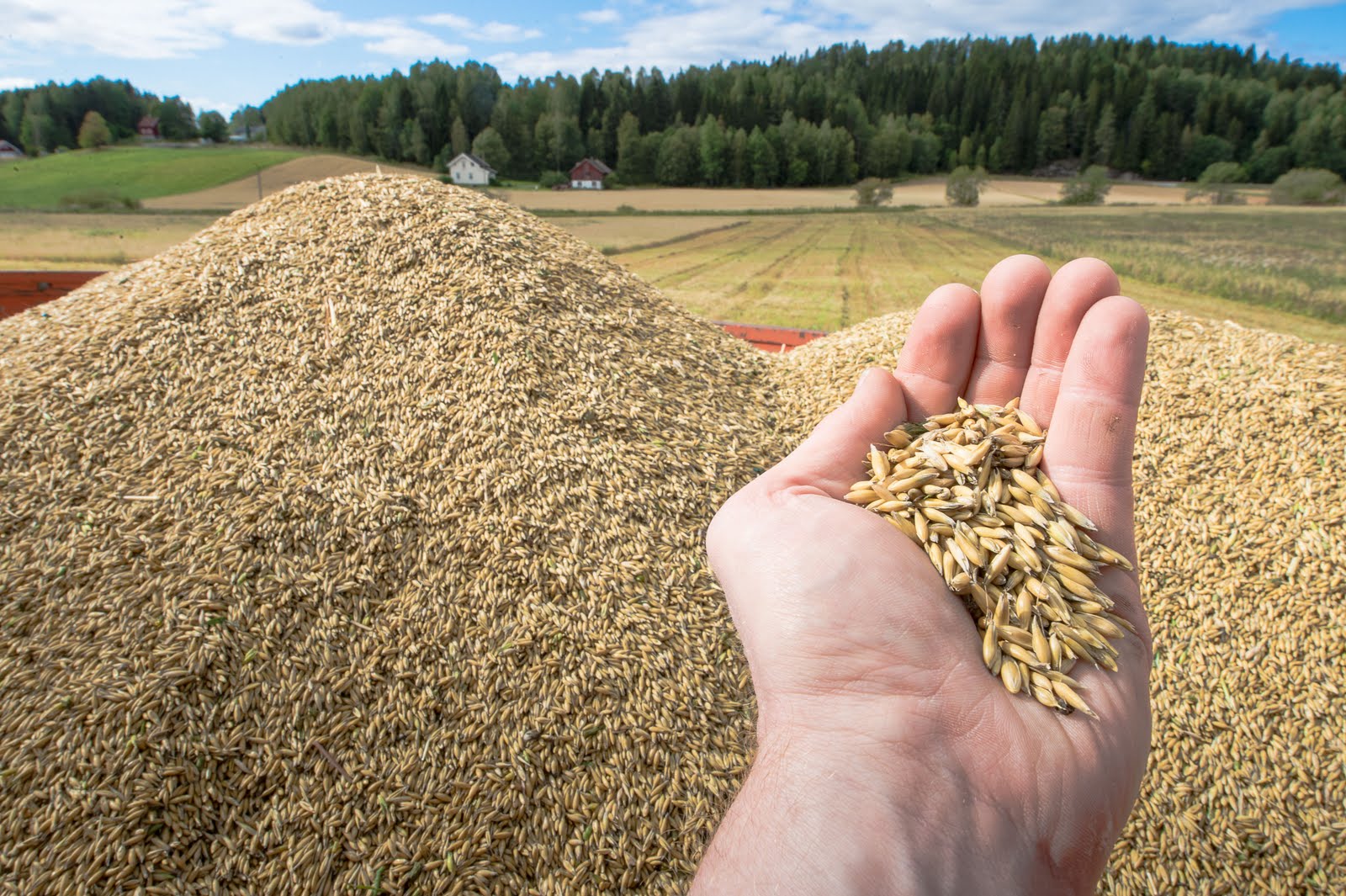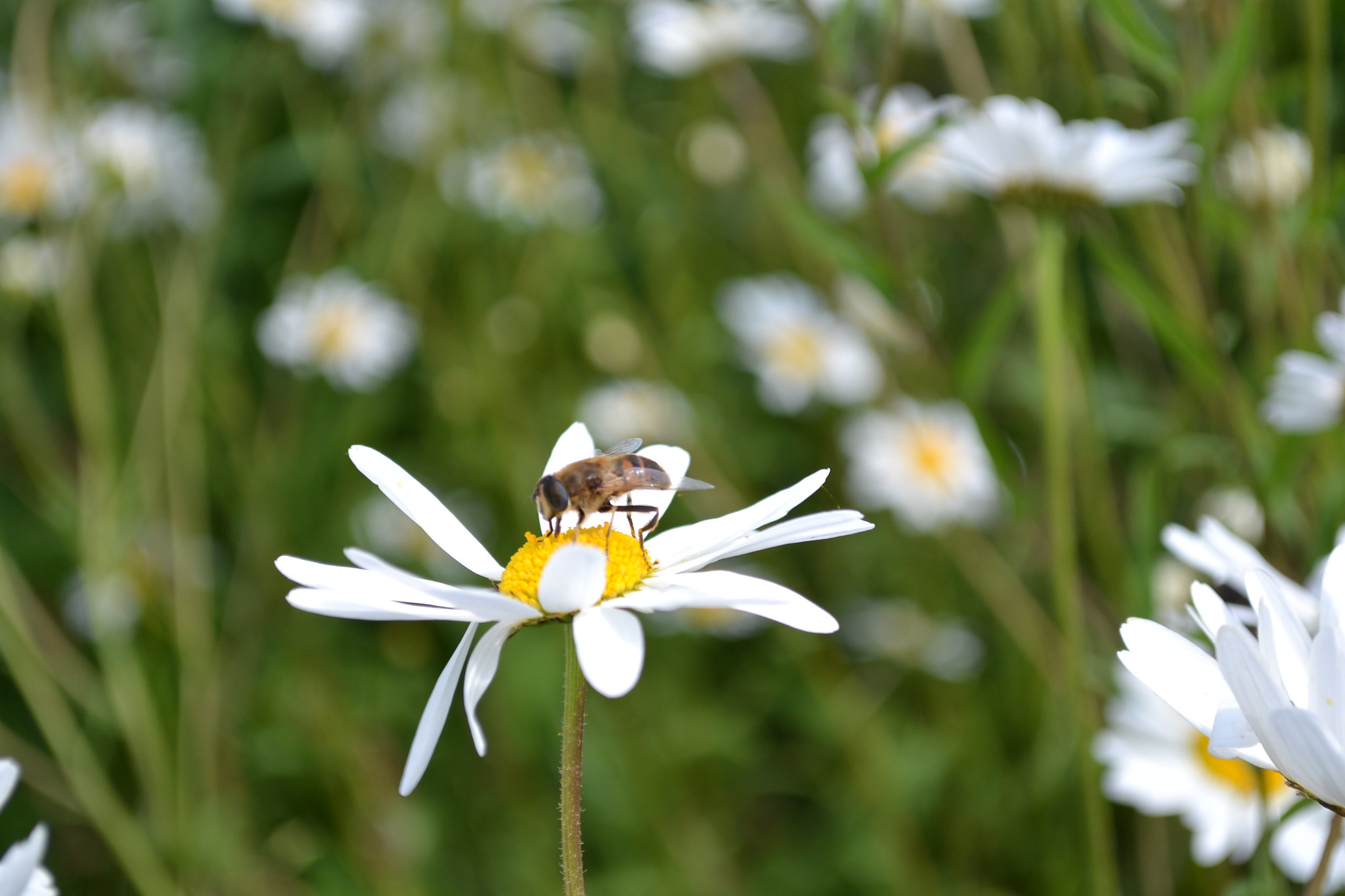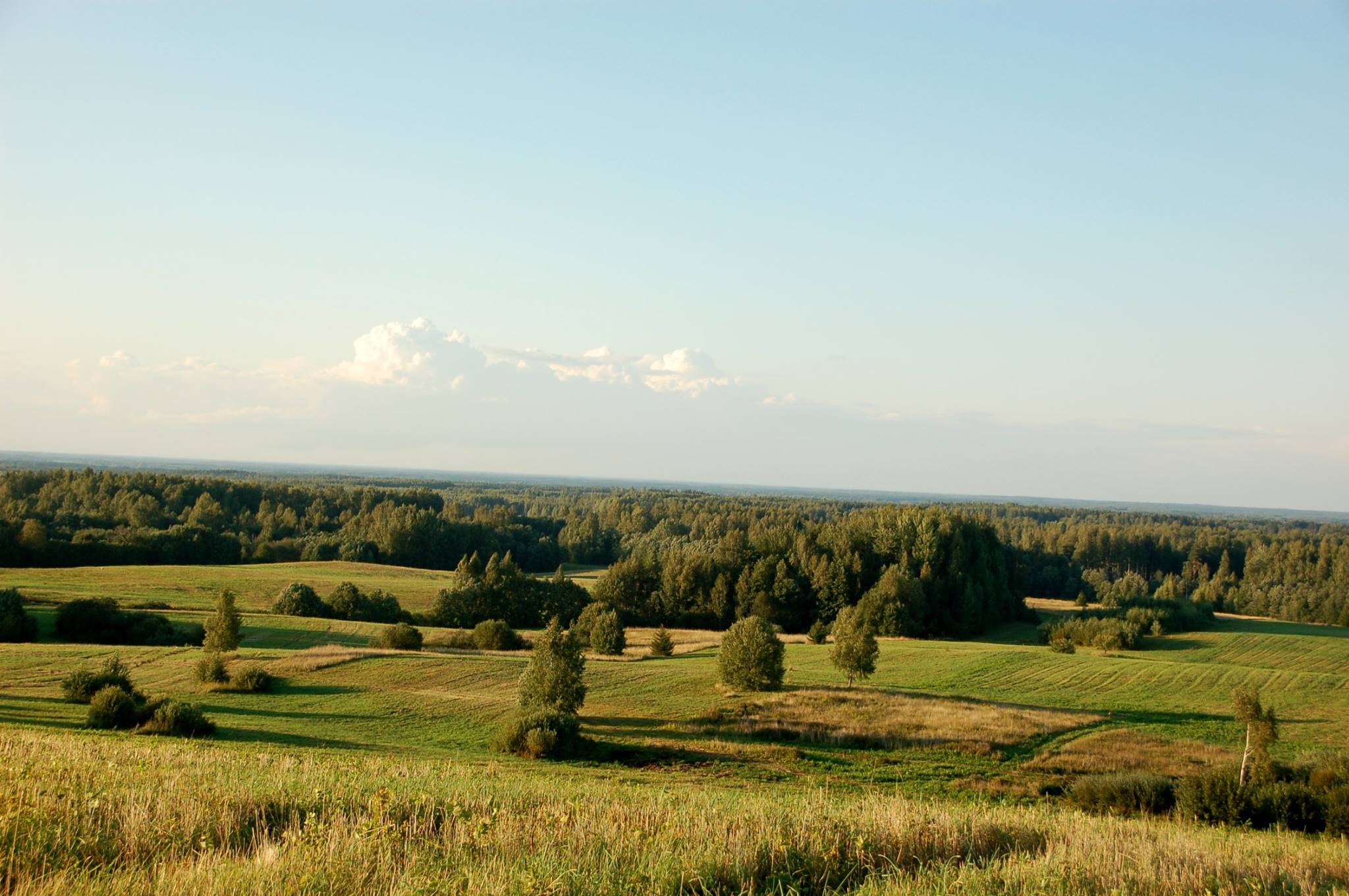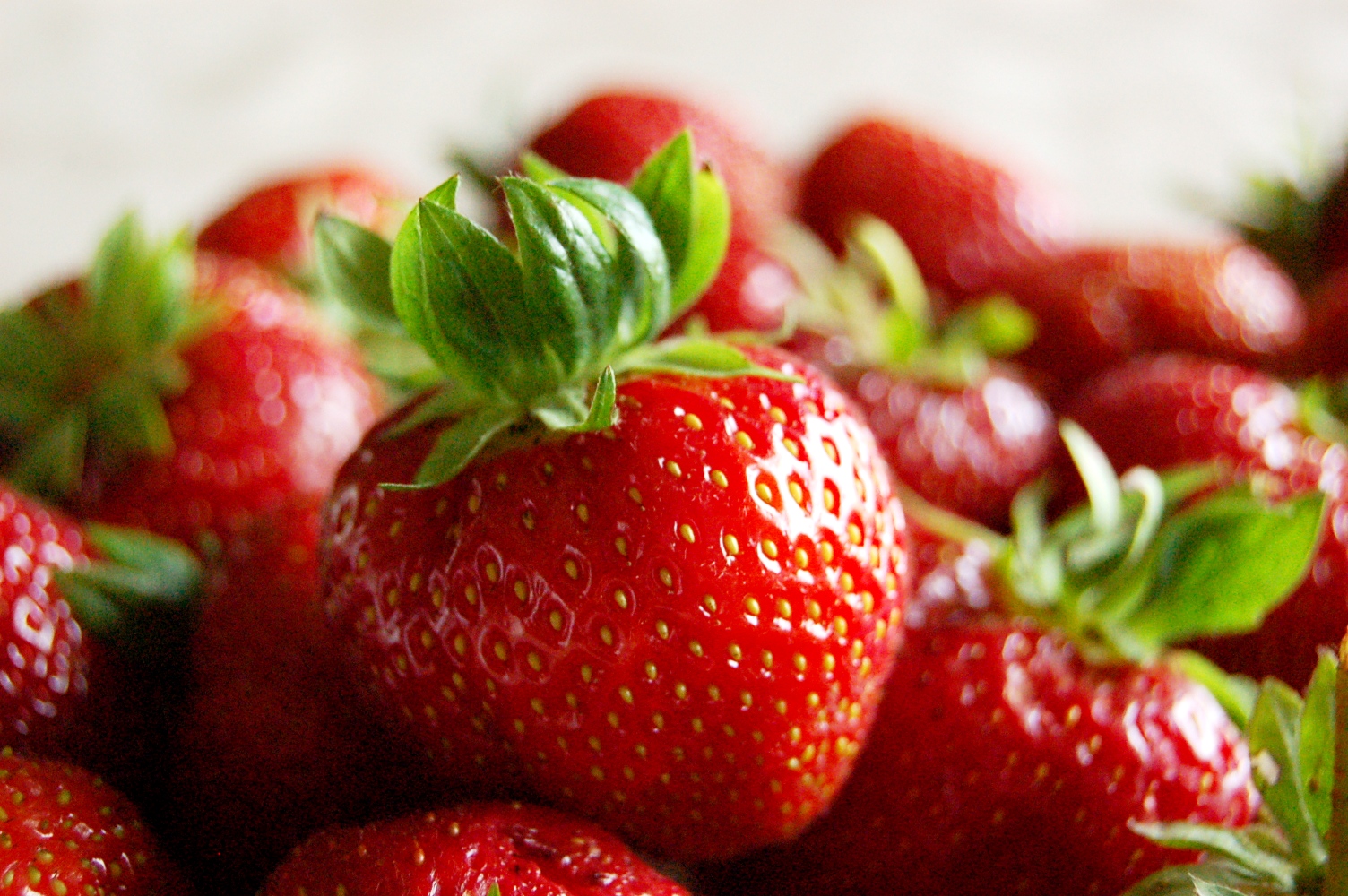Overview of studies on the biodiversity impacts of organic farming 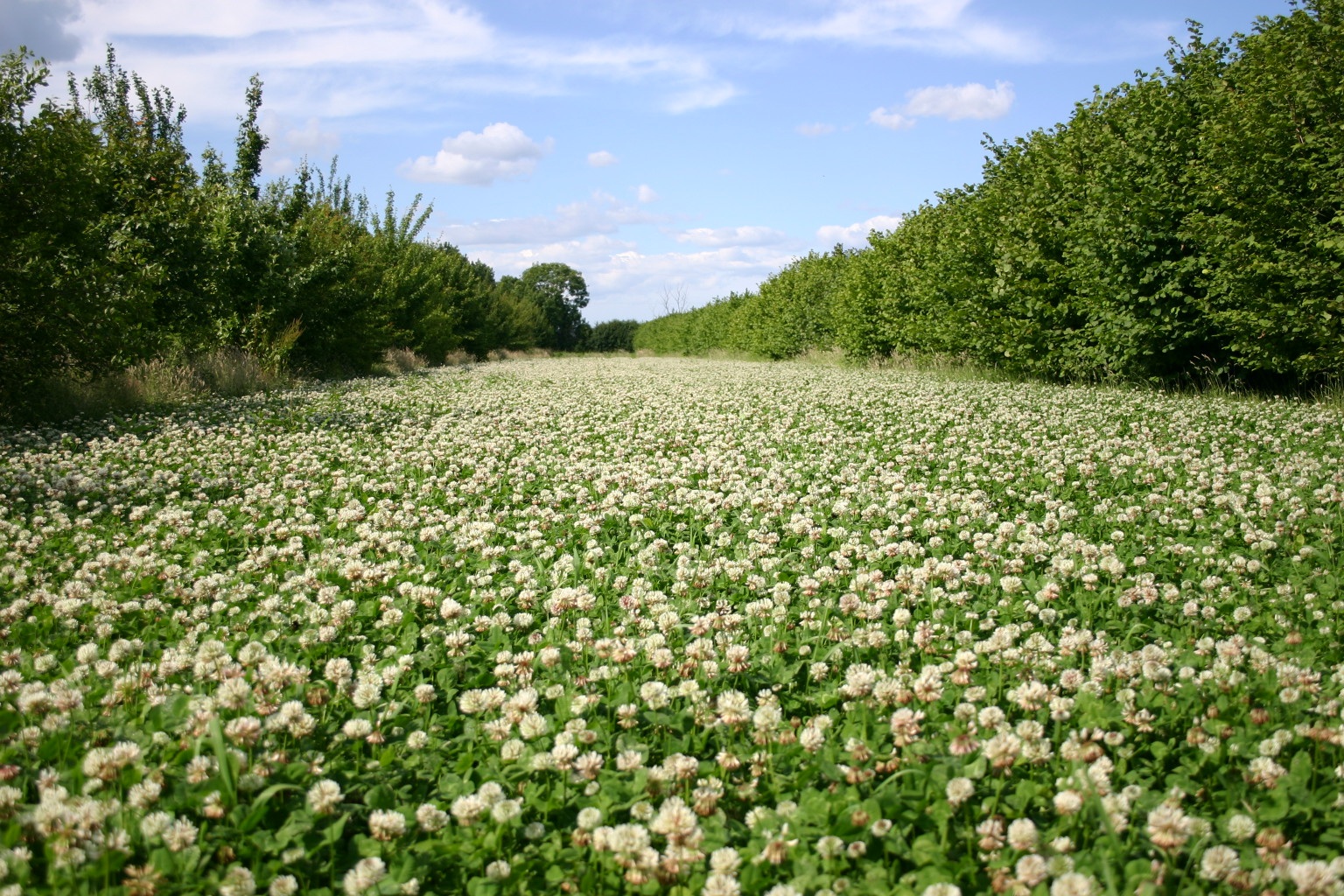
Introduction
A large number of research projects and reviews have been conducted on this topic. The aim of this part of the study is not to undertake another comprehensive review, but to summarise the main outcomes with a focus on primary land use types (arable, grassland, horticulture etc.) and geographical conditions across the EU. The scope, strengths and weaknesses of the evidence base are identified where published literature is available. The range of biodiversity impacts, from soil organisms to plants, birds, habitats and landscapes will be considered. Recent reports e.g. Lampkin et al. (2015); Dimambro et al. (2018); Sanders and Hess (2019), will provide a starting point for this review, updated with any significant new evidence from the last two years.
Biodiversity can be considered at the genetic, species and ecosystem level. It is of interest to human populations for both intrinsic (i.e. cultural, social, aesthetic and ethical benefits) and instrumental (i.e. directly used for food, fuel, recreation, or indirectly via ecosystem processes and environmental services) reasons (Decaëns et al., 2006).
While biodiversity is important per se, and a major focus of nature conservation and agri-environmental policies as a consequence, it is also of relevance in terms of the support services that it provides to agriculture, not least because agriculture is fundamentally concerned with the provisioning ecosystem services of food and energy production. However, as highlighted elsewhere in this report, biodiversity also contributes to system self-regulation, in particular of pests, parasites and diseases, as well as to pollination, enabling plant reproduction, genetic resources, soil health and water quality. Biodiversity loss as a consequence of agricultural intensification has had a negative impact on these ecosystem services (UK National Ecosystem Assessment, 2011). To an extent they can be replaced by other inputs, but at a cost.
Pollinators in particular are a cause for concern. Approximately 250 crop species are grown in Europe of which 150 are believed to be pollinated by insects and the global value of pollinators in 2005 was estimated to be €120 billion (Gallai et al., 2009). It is therefore a concern what impact the decline in farmland pollinators, particularly honeybees and bumble bees (Biesmeijer et al., 2006; Potts et al., 2010; Hallmann et al., 2017), as a result of agricultural intensification (Goulson, 2003), will have on national and global food production.
Comparisons between organic and conventional systems have historically been difficult to make sense of because of the inherent and implicit differences between the systems and the scale at which comparisons are being made, i.e., plot, field or landscape. This frequently caused bias in site selection and made conclusions on individual studies difficult to draw, which further complicated meta-analysis.
Tuck et al. (2014) improved on previous reviews by addressing the hierarchical structure of multiple within-publication effects sizes and including standardised measures of land-use intensity and heterogeneity across all studies. The meta-analysis found that, on average, organic farming increased species richness by about 30% (Figure 2.1). This result was robust over the last 30 years of published studies, lending support to the argument that organic farming is a reliable method for increasing biodiversity on farmland and may help to reverse the declines of formerly common species. This effect was also robust across sampling scales, in contrast to other studies that suggest the benefits of organic farming diminish at larger scales (Gabriel et al., 2010).
The average effect size and response to agricultural management system depended on taxonomic group, functional group and crop type (Figure 2.1). Plants benefitted the most from an organic approach, while arthropods, birds and microbes also showed a positive effect (Tuck et al. 2014, op cit.). Among functional groups, pollinators showed the largest effect size, while soil-living decomposers showed little effect. This lack of effect on decomposers is somewhat surprising, given the fact that organic farming has been shown to benefit soil structure and soil conditions but may be due to stronger influences of soil type and structure on soil biodiversity than the farming system itself, although it was noted that soil organisms were in general understudied. There were also varying responses among crop types, with large positive effect sizes in cereals and mixed farming and moderate positive effects for all others (Figure 2.1). Of the three measures of land-use intensity (proportion of arable fields; typical field size; number of habitats), only the proportion of arable fields had any significant overall effect. When there was a greater proportion of arable land in the system, the difference in diversity between organic and conventional farms increased (Tuck et al. 2014, op cit.). This suggests that the effect of organic farming on biodiversity is greater in intensively managed landscapes, although again, this was found to vary between groups. For example, predators have a greater response to organic farming in intensively managed landscapes while the effect on pollinators does not increase much with land-use intensity (Tuck et al. 2014, op cit.).
Figure 2.1: The difference in species richness (%) on organic farms, relative to conventional, classified by (a) functional group, (b) organism group and (c) crop types (the grand mean is shown in black, accompanied by the black line).
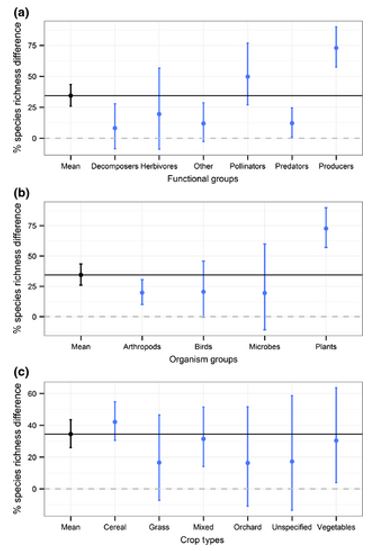
Note of caution
The studies drawn upon in this report (Lampkin et al., 2015; DEFRA, 2018; Dimambro et al., 2018; Stein-Bachinger, Haub and Gottwald, 2019) themselves drew upon a wide range of publications, and the data held within them. That said the number of papers in any specific area could be small, or of different sample and data sizes, so any one publication can have a greater or lesser impact on the analysis and conclusions by the authors. One particular paper, Gabriel et al. (2010), was a large study using novel site matching techniques and drawing on a wealth of data collected during the work of a wider project. The findings are robust for their work in the south of England. However, it is suggested that the sheer size of the data source could possibly bias results when combined with others – in some analysis N=64 with the Gabriel data and N=32 without it. Stein-Bachinger et al. (2019) undertook some analysis with and without the data and showed this could be the case in some but not all analyses. This report would not wish to discount the data from Gabriel et al. (2010) but where conclusions are being drawn where the data may overwhelm other sources they should be taken with some caution and caveats.
Biodiversity impacts of organic farming
This report is based initially on four existing studies. In recent years four reviews have been undertaken on the biodiversity impacts of organic farming. In the German language review edited by (Sanders and Hess, 2019) a chapter on biodiversity (Stein-Bachinger, Haub and Gottwald, 2019) undertakes a meta-analysis of a range of topics including arable weed flora and seed bank, field margin vegetation, birds and insects. Two studies in English (Lampkin et al., 2015; Dimambro et al., 2018) have also been used as the baseline information for this report. The summary of the review by Stein-Bachinger, Haub, and Gottwald (2019) that was in German and primarily focused on central Europe reported
“Positive effects of organic farming on biodiversity can be clearly demonstrated for the species groups studied.
On average (median values), species numbers on arable land were 95 % higher under organic management as well as 61 % higher for weed seed bank*and 21 % higher for field margin vegetation†. In the case of the farmland birds, the number of species was 35 % higher and the abundance 24 % higher (median values) for organic farming. At 23 % and 26 %, respectively, these values were higher for flower‐visiting insects. Overall, 86 % (flora) and 49 % (fauna) of the comparison pairs showed distinct advantages through organic farming. Only two out of 75 studies found negative effects from organic management in 12 out of 312 pairs, based on the classification made. It should be noted that landscape structure has a significant impact on biodiversity, especially on fauna, and this can strongly outweigh the effects of land use”.
Lampkin et al. (2015) had a wider focus looking at the role of agroecology in sustainable intensification but did look at biodiversity benefits of both organic farming and agroforestry. They concluded “that agroecological approaches can maintain or increase biodiversity and the output of related ecosystem services – with appropriately designed and managed agroforestry and organic systems offering potentially greater benefits than integrated systems‡.
Dimambro et al. (2018) suggested equally positive responses and summaries with “…Studies over the last 30 years have observed that biodiversity generally benefits from organic agriculture, with increases in a range of taxa observed in many cases. However, some studies observe mixed effects with increases, no change or decreases in different taxa or species. The increases in biodiversity in organic systems are often attributed to the more heterogeneous nature of organic holdings (including crop diversity, boundary features and wooded areas) rather than at an individual field level. Organic farms may not always have higher biodiversity than comparable conventional farms, because other factors, especially landscape, do appear to play a large part in influencing biodiversity. …”.
Stein-Bachinger et al. (2019) sets out the position in arable systems well for central/northern European systems but there is no reason to believe that the situation in other parts of Europe will be any different. They examined the systemic achievements of organic farming for biodiversity from a large number of scientific studies over the past 30 years. Many comparative studies of organically and conventionally managed arable and grassland areas in the European show that organic management has positive effects on biodiversity (Azeez, 2000; Stolze et al., 2000; Bengtsson, Ahnström and Weibull, 2005; Hole et al., 2005; Mondelaers, Aertsens and van Huylenbroeck, 2009; Rahmann, 2011; Tuck et al., 2014). This applies to soil microbiology and fauna e.g. Niggli and Bensson (1996), Lori et al. (2017), the wild weed flora including Frieben (1990), Hald (1999), Rydberg and Milberg (2000), Frieben et al. (2012), the above-ground living small animal fauna, e.g., Pfiffner and Niggli (1996), Feber et al. (1997), Brown (1999), Pfiffner et al. (2001), Lichtenberg et al. (2017) as well as the species numbers and densities of birds, among others Lokemoen and Beiser (1997) and Chamberlain et al. (1999).
Analysis was undertaken on the available data and comparative pairs from a range of sources. A further analytical check was also undertaken where comparisons in differences between the results of organic and conventional were defined as unambiguous if the difference was at least 20%.
Table 2.1: Management effects on number of species and/or abundance for different species groups in four reviews

Arable
Arable weed flora
Arable weeds are plants that are able to exploit the short-term, open conditions created by ploughing and harvesting within arable systems. Most are annuals that are able to flower and set seed in a short period of time – weeks rather than months. Examples of arable weeds are such plants as Common Corncockle (Agrostemma githago), Cornflower (Centaurea cyanus), Field Gromwell (Lithospermum arvense), Poppy (Papaver hybridum) and Cow Cockle (Vaccaria hispanica). They are an important part of our agricultural heritage. They were once so common they were considered pests but with the advent of intensive farming systems many are now rare and on the edge of extinction. Organic farming with its avoidance of herbicides can play an important role in protecting this heritage (AHDB, 2017).
Stein-Bachinger et al. (2019) make a compelling case that arable flora (weeds) has decreased by 95-99% since the 1950/60s with the decrease particularly seen in conventionally managed fields. The arable weed communities that still exist are impoverished and show a strong decline in specialist arable species and a relative increase in those that are often herbicide tolerant generalists. They based their conclusions on a comparative analysis on 38 studies with 110 comparison pairs. This work showed great variability with a large range of the mean number of arable weed species between organic and conventional systems. Comparisons between organic and conventional systems showed at the lowest end that the organic system had 27% fewer mean weed species than conventional although when the median value was looked at it was 95% higher in organic than conventional systems. As the data was likely to have been variable the median value is likely to be the more meaningful outcome here. For the total number of species, the variation is lower, with a range of 20% to 95% more species in organic systems. All the organic cases had higher total species than conventional with the median being +66%.
Further work (11 comparison pairs) investigated within-field and field margin differences. For the comparison pairs within-field, the median was significantly higher at +304% than at the field margin +94%. The impact of organic farming on the number of species was therefore greater within-field than at the field margin although still considerably greater across the whole field.
A third analysis from the results of 110 comparison pairs can be seen in Figure 2.1. The overall result was that in 86% of cases there was a higher number of floral species in organic land and total number and abundance (mean and total) greater in all studies.
When the 20% filter was applied it did not change the conclusions of the study§.
Table 2.2: Classification of organic farming in terms of number of species and abundance of arable flora compared to conventional agriculture
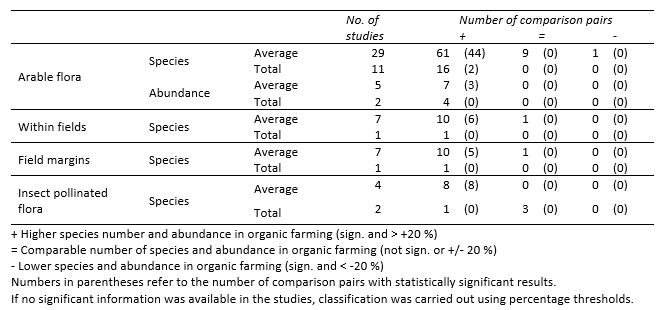
These analyses on arable flora confirm previous reviews and meta-analyses that organic farming has a positive impact on arable flora when compared to conventional farming. They suggest that the reasons for this are the prohibition of herbicides in organic farming, the exclusion of mineral nitrogen fertilizers, and the overall lower nutrient level and lower crop density, and thus better conditions for low-competitive species (Ponce et al., 2011). The control of weeds via mechanical weeding has less effect on the flora than herbicides (Wilhelm, 2016).
Studies by Armengot et al. (2013) showed that, in contrast to herbicide application in the conventional variants, biodiversity was not negatively affected by weeding in the organic variants. The only study with a comparative pair in which organic farming had a lower mean number of species according to the 20% classification is by Knudsen et al. (2017) and relates to a study of a very extensive and traditionally used cultural landscape in Hungary, where conventional land was also cultivated without pesticides, with little fertiliser and in rotation with grassland. This study is therefore not comparable with studies on modern, conventional farming systems. All other comparisons from the study by Knudsen et al. (2017) for other European countries showed clearly positive values for organic farming.
A significant difference in the comparative studies was due to the location of the study areas. This became clear from studies in which species surveys were carried out both in the field interior and at the field margins e.g. Gabriel et al. (2010), Batáry et al. (2013). In studies by Batáry et al. (2012) on the average number of species in winter wheat fields, the difference between the organic and conventional variant in the field interior was around 300% (median), three times higher than at the field margins. These results can be interpreted to mean that the influence of herbicides and fertilisation in conventional farming is less pronounced on the field margins, or that there are “survival niches” on the immediate field margins which are not always or less strongly affected by herbicide treatments (van Elsen, 1989; Kohler, 2015). In organic farming, too, the field margins can be richer in species because mechanical weed control is usually less effective here, the soil can be poorer in nutrients, the stands are lighter and there is no shade from one side of the crop. In addition, fringing species and grasses may migrate more, and specialised species may also occur on particular sites e.g. dry grasslands (Gottwald, 2010). In studies carried out more than 25 years ago, van Elsen (1994) was able to show that in organic farming the difference between field margins and field interiors can level off and that in some cases the inner field margins were even richer in typical Segetal species.
Drawing from the information in Lampkin et al. (2015) organic arable fields can support 68-105% more plant species, and 74-153% greater abundance, compared with conventional arable fields (Fuller et al., 2005). Roschewitz et al. (2005) concluded that as organic systems are characterised by diverse seed banks, organic fields could be viewed as self-sufficient ecosystems for plants, not relying on immigration from surrounding habitats to maintain species pools. Positive effects of organic farming on plant diversity have been linked to organic management practices including prohibition of herbicide or mineral fertiliser inputs, sympathetic management of non-cropped areas, and more mixed farms (Hole et al., 2005).
Arable seed bank
The Stein-Bachinger et al. (2019) section on the arable seed bank, which show the seed potential in the arable soil, was evaluated using 5 studies with a total of 21 comparison pairs. All organic variants had higher mean species numbers. The median was 61% and the values showed a relatively low range.
In 83% of the comparison pairs, the 20% limit was used to assess a positive effect of organic agriculture to the mean number of species. Two comparison pairs showed no differences in management. The mean abundance showed significant positive effects of organic management for all comparison pairs.
The results on the seed bank correspond to the results of the arable weed flora. In general, when considering flora, it is important to take into account that the absence of certain species is not necessarily related to current management. Factors such as the regional species pool, propagation potentials and impact history e.g. exhaustion of the seed storage due to previous intensive conventional management, can provide a decisive influence on the species spectrum (Rotchés-Ribalta et al., 2015; Lang et al., 2016). This decline in arable weeds has a far-reaching impact up the trophic levels with arable weeds being food and cover for other important biodiversity such as insects, birds and mammals (rabbits, hares etc). The reduction in flowering plants will also impact on pollinators. Many of these declines are driven by conventional production methods such as high fertilisation and dense crop canopies, simplified rotations and effective seed cleaning.
Hawes et al. (2010), in research comparing the diversity and abundance of the within-field seedbank and emerged weed flora on conventional, integrated and organic farms across the arable east of Scotland, found significant responses to management intensity, ranging from high agrochemical input use and winter cropping to no inorganic inputs, spring cropping and mixed farming practices. Within fields, species richness was greatest in organic farms, where there were more weeds. However, at a regional and landscape scale, species richness was greater in integrated¶ and conventional farms, due in part to a greater range of crop types and cropping practices between fields, particularly on the integrated farms.
Arable field margins
In the Stein-Bachinger et al. (2019) chapter a total of eight studies were evaluated with 16 comparison pairs. In all cases, the average number of species under organic management was higher and the median value of the number of species in organic variants was 21% higher than in the conventional variant. The classification based on the 20% limit and taking into account the significance information in studies revealed a higher mean number of species in the organic variants in 71% of cases. These were significant in 90% of cases. Organic farming also showed no negative impact on species abundance.
In the studies on field margin vegetation, the differences between management systems were slightly lower than within-field, but significantly positive effects of organic farming still predominated.
Birds
In Stein-Bachinger et al. (2019) the evaluation of birds was carried out on the basis of 18 studies with 57 pairs of comparisons. For the average number of species in birds (n = 16), the range was between 9 and 85%, with a median of 35%. The mean abundance of birds (n = 20) also varied, and the median was 24%. Only 4 comparison pairs had negative deviations, i.e., the values for the number of species and abundance were higher in conventional management. Taking into account the significance information in the studies and the 20% limit, the average number of species and the total number of species in approximately 70% of organically managed cases were higher than in the conventional cases. For mean abundance there was a more mixed picture with half of the comparison pairs studied showing a significant positive effect of organic farming.
Six studies with 10 comparison pairs for Skylark (Alauda arvensis) were evaluated separately. A similar picture emerged for the skylark, but the results on overall abundance must be interpreted against the background of the small number of studies and comparison pairs. However, in none of the comparison pairs was a negative effect on ecological management found.
The results on the birds confirm the findings of previous reviews and meta-studies, according to which organic farming has a positive impact on the biodiversity and abundance. However, a larger proportion of the comparison pairs also showed, according to the 20% classification, no differences in the number of species and abundance. One explanation may be that birds are a mobile species group: the wagtail, for example, can search for food up to 1000m from its nest location (Südbeck et al., 2005). Thus, the species can breed in a field and forage in the surrounding area, which reduces the direct influence of intensive management. Mobile biodiversity, with its more flexible spatial use, also creates a methodological problem when comparing land use systems, in contrast to more sedentary types such as the site-constant flora or insects with a smaller radius of action.
Another methodological problem arises from the fact that many wild species of animal in the agricultural landscape use the managed land only as a partial habitat and also use the range of landscape elements e.g., hedges. Some studies take this into account e.g. Gabriel et al. (2010), Batáry et al. (2010), Winqvist et al. (2012) in that landscape structures are recorded and either incorporated into the evaluation on a multifactorial basis or comparable farms are selected in similar landscapes. From the point of view of the specific habitat needs of the individual bird species it is however doubtful that this approach succeeds and leads to “equal” conditions. For example in Gabriel et al. (2010), the study areas were selected after analysing 30 different landscape variables. Nevertheless, differences in the landscape structure were cited in the discussion as a probable cause for the different bird colonization of the comparison areas. In the study by Freemark and Kirk (2001), the structure of the landscape (“local habitat” – e.g. hedges, proportion of forest, distribution of winter and summer crops, proportion of grassland) and the management system (organic/conventional) were thought to contribute equally to the variation in bird populations.
For the skylark, subject of a small number of studies, there appears to be a more positive response to organic farming. This open-country species has its main habitat on fields and especially on arable land. It prefers larger fields (Geiger, 2011, quoted in Winqvist et al. 2012) and is therefore less influenced than other field birds by landscape structures, but reacts more directly to changes in management (Kragten and de Snoo, 2008; Marja et al., 2014; Joest, 2018). Generally speaking, in connection with the results on arable flora, skylarks and other field bird species are highly prone to also react positively to a well-developed field weed flora (nesting site and food source for insects), which is much better developed in organic farming systems.
The study by Lampkin et al., 2015 found that organic farming has been found in general to have a positive impact on bird biodiversity, but with species-specific variations in responses. To some extent this may be due to the scale of physical weed control on organic farms e.g. Geiger et al. (2010) but could also be partly due to the size and mobility of birds together with specialisation of habitats. Gabriel et al. (2010) recorded higher overall diversity on conventional farms (particularly of farmland specialists), despite greater food resources (arthropod abundance, weed seeds, and a higher proportion of winter stubble) in the paired organic farms. However, generalist species and members of the crow family were found in higher densities on organic farms. They concluded that landscape characteristics, such as the proportion of arable land and semi-natural grassland, and field margin and hedge lengths, rather than farm management appeared to be the important drivers of bird abundance, although these may in part be a function of management system.
In a study of field-breeding birds, Kragten and de Snoo (2008) found higher abundances of skylark on organic farms, reflecting this species preference for spring cereals which are generally perceived to be more widespread in UK organic systems, due to the need to alternate sowing/planting times for weed control. With a focus on upland farms in England and Wales, Watson et al. (2006) found that in winter, there were significantly higher total densities of birds, and in particular insectivores and Farmland Bird Indicator species, on organic farms. In the non-cropped environment, the longer and more varied hedges that tend to characterise organic farms do have some advantages for a range of bird species relative to non-organic farms, especially in simple landscapes (Batáry, Matthiesen and Tscharntke, 2010). Invertebrate-feeding species particularly benefit from the greater habitat diversity found in organic systems, which enhance foraging resources (Smith et al., 2010). In Scottish research, McCracken and Tallowin (2004) highlighted the importance of mixtures of grasses and broad-leaved plants with a range of vegetation heights and structures to provide plant and invertebrate food sources for farmland birds. The diverse ley mixtures including herbs and legumes favoured by some organic producers are likely to support this process, although cutting and grazing needs to be carefully managed to ensure there are food sources over as long a period as possible. Bird populations may also be influenced by the use of untreated seed on organic farms (Roschewitz et al., 2005; Macfadyen, Gibson, Polaszek, et al., 2009; Macfadyen, Gibson, Raso, et al., 2009).
Insects
A summary of the evidence for organic farming and insects (Lampkin et al., 2015) reported pollinating insects, such as butterflies and bees, particularly seem to benefit from organic practices (Rundlöf and Smith, 2006; Clough et al., 2007; Feber et al., 2007; Holzschuh et al., 2007; Rundlöf, Bengtsson and Smith, 2008; Gabriel et al., 2010; Hodgson et al., 2010), probably reflecting the greater floral resource base available both within the cropped area and semi-natural habitats (see previous section on plants).
Predatory taxa including spiders, wasps and ground beetles also respond positively to organic farming (Schmidt and Tscharntke, 2005; Holzschuh et al., 2007; Diekötter et al., 2010) which has been attributed to greater structural diversity within habitats, increased habitat connectivity, the availability of overwintering habitat and alternative feeding resources in semi-natural habitats.
A minority of studies have recorded no significant differences, or a negative response to organic systems, reflecting taxon-specific variation. Ground and rove beetles, pests, and parasitoids have been recorded in lower densities on organic farms in some studies (Bengtsson, Ahnström and Weibull, 2005; Fuller et al., 2005; Clough et al., 2007). Species of ground and rove beetles vary widely in their habitat preferences (Luff, 1996) and some species may prefer conditions found on conventional farms.
Macfadyen et al. (2009) found that herbivores in organic fields were attacked by more parasitoid species, while Crowder et al. (2010) found that pest control was due to greater evenness of natural enemy populations, independent of species richness. Natural management of pests is, however, variable (Roschewitz et al., 2005; Macfadyen, Gibson, Polaszek, et al., 2009; Macfadyen, Gibson, Raso, et al., 2009), perhaps because of unrecognised interactions in multi-trophic feeding systems and because of the complex interaction between dynamics of their hosts and responses to local and landscape factors (Holzschuh et al., 2007).
In the Stein-Bachinger et al. (2019) report a total of 21 studies with 108 comparison pairs were evaluated, comparing the occurrence of selected flower-visiting insect groups (wild bees including bumblebees, honeybees, butterflies, hoverflies and lacewings) on organically and conventionally farmed areas. For insects as a whole, the median number of species was 23% greater on organic areas. The minimum and maximum values were -14 % and 44 % respectively. Separately, the group of bees (wild and honeybees) had a median of 30% higher with a high range of -14% to 592%. For butterflies the median was at 18 % with significantly less variation of all values.
The mean abundance also showed a similar picture as the mean species number for insects with 64 comparison pairs and for only bees (35 comparison pairs). The medians were 26 and 27 % respectively. When only wild and honeybees were considered, the values ranged from -44% to +603%. The median for butterflies (15 reference pairs) was 59% with a variation of -15 up to +122 %. The mean abundance compared to the mean number of species in all species groups showed a higher spread of values.
Figure 2.2: Relative differences between organic and conventional agriculture with regard to the average abundance of flower-visiting insects, without results by Gabriel et al. (2010)
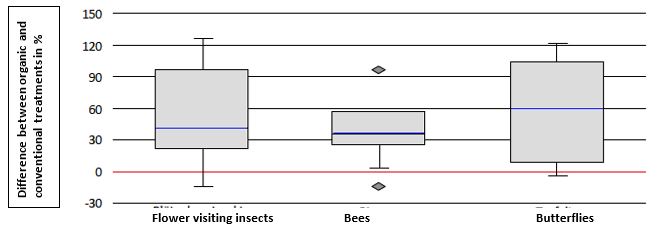
The study by Gabriel et al. (2010) had 32 comparison pairs included in their evaluation which had a significant influence on the overall result#. Without these data, the median abundance was 16% higher at 42%. This change mainly affected the group of wild and honeybees, but hardly any effect could be observed in butterflies. Significantly, only two comparison pairs showed negative difference in total, while the mean abundance of the organic variants was greater for all others than for the conventional ones.
The overall findings of the Stein-Bachinger et al. (2019) study are that in the case of insects, taking into account the significance data in the studies and the 20% limit, 41% of the comparison pairs showed higher mean species numbers in the organic variant and negative effects of organic management did not occur. In the mean abundance, 42% of the comparison pairs showed a positive effect of organic farming, while the effect was negative in 17% of the comparison pairs. However, it was shown that this negative effect was based on only one study (Gabriel et al., 2010).
In the separate evaluation of wild and honeybees, the values were similar in terms of species numbers and abundance. Without including the data from the study by Gabriel et al. (2010), no negative effects resulted (Table 5.6). In the study by Gabriel et al. (2010), the values of the organic variants were also higher than in the conventional ones. Overall, a separate analysis of butterflies showed that 73% of the comparison pairs had positive effects of organic management on the mean abundance. This effect was less pronounced with regard to the mean number of species. A total of 4 out of 9 comparison pairs (44%) were assigned to the category Organic +. 5 comparison pairs showed no difference between the management options.
Table 2.3: Classification of organic farming in terms of number of species and abundance of flower-visiting insects compared to conventional agriculture
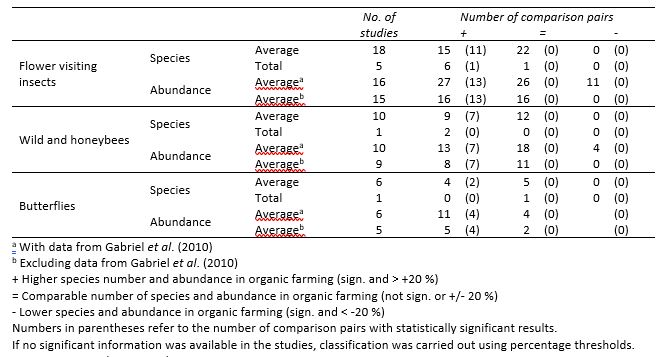
The positive influence of organic farming on the biodiversity and abundance of the selected insect groups was demonstrated in the Stein-Bachinger et al. (2019) study in line with the conclusions of previous reviews and meta-studies. It is important to note that in only one study with 32 comparison pairs were negative effects of organic farming seen on the basis of the selected 20% deviation (cf. abundance mean a and mean b). In the case of insects, the group of wild and honeybees had a significant influence on the greater spread of values. Wild bees (including bumblebees) should on the one hand react to the better floral supply in organic farming, but on the other hand are highly dependent on suitable nesting substrates in open landscapes e.g. Happe et al. (2017). Many species need specific landscape features and nearly natural features. If these features are not available in the landscape, no major effects are to be expected from the cultivation system, especially with the mean abundance. Otherwise, the importance of organic farming can be very high locally. Holzschuh et al. (2008) found an increase in the abundance of 60% in solitary bees and of 150% in bumblebees on fallow strips that were surrounded by a high proportion of organically farmed fields. The study investigates further a number of other studies which showed differing outcomes for insect biodiversity. Power and Stout (2011) showed negative values for organic farming for wild bees but the sample size was very small (8). Krauss et al. (2011) although had large samples focused their studies on the within field areas but positive outcomes in the organic variant.
In summary, for the insect groups selected in the study, it can be stated that the weaker reaction to organic farming or the greater variation in effects compared to the flora may be due in large part to the dependence of many insects on the landscape structure or on accompanying biotopes, especially during reproduction and hibernation. This dependence can strongly overlay the effects of land use (Pfiffner et al., 2001; Tscharntke et al., 2005; Holzschuh et al., 2007; Holzschuh, Steffan-Dewenter and Tscharntke, 2010; Winqvist, Ahnström and Bengtsson, 2012). The generally high variability in insect abundance can also contribute to the high variance in the results on insect abundance, which makes standardised comparative studies difficult. In addition, asynchronous fluctuations in different study areas can strongly influence the results.
Grassland
Unimproved grassland
Studies on the impact of organic farming on grassland biodiversity are not as common as those for arable. Dimambro et al. (2018) suggested that results were also less clear than when considering the whole farm. For example, a review paper by Hole et al. (2005) observed that within grassland systems differences in vegetation composition between organic and conventional sown pastures tended to be less marked than for arable fields, and that the natural colonization of grassland to form a diverse sward is a slow and unreliable process, regardless of farming regime, especially where rarer species are largely absent from the seedbank. Indeed, a meta-data analysis of literature found 19 studies on grassland observing an increase in floral biodiversity on organic farms with five studies showing no change when compared to conventional farms (Rahmann, 2011).
In a lowland permanent grassland study (not ploughed or reseeded for at least seven years) in the Republic of Ireland, ten matched pairs of organic and conventional dairy farms were investigated (Power and Stout, 2011). Total plant richness was significantly higher on organic farms than conventional and also higher in field margins than the centre of fields.
In a Bavarian permanent grassland comparison study the number of plant species in organic grassland was only slightly higher than extensive grassland, which was in turn slightly higher than intensive grassland of the eight organic grassland farms, the one that converted three years prior to the study had a lower number of plant species than the average for intensive farms (Haas, Wetterich and Köpke, 2001).
Batáry et al. (2013) investigated insect-pollinated and non-insect pollinated forbs in meadows and found that both diversity and cover of forbs were positively affected by organic management in meadows (and wheat fields) and showed that organic management supports a higher species richness and cover of insect-pollinated plants.
Studies of soil biodiversity within grassland systems have shown mixed effects. A study of Welsh grassland soils (Yeates et al., 1997) showed inconsistent effects of organic or conventional management practices. Bacterial and fungal phospholipid fatty acids (PLFA) were about a third of extractable PLFA. Bacterial PLFA predominated and were largely unaffected by management (except in silt where there were more in organic). Fungal PLFA were greater under organic management in all soils. Tardigrada and Acari were more abundant under organic management, as were nematode populations. Lumbricid earthworm populations were smaller under organic managements at all sites.
In a large-scale comparison of mycorrhizal fungal communities, Verbruggen et al. (2010) assessed arbuscular mycorrhiza (AMF) community composition in 13 pairs of organic and conventional arable fields and five semi-natural grasslands. Highest AMF richness was recorded in grasslands, and organic systems had significantly higher numbers than conventional fields. AMF richness increased significantly with time since conversion from conventional to organic management. AMF communities in organic fields were more similar to grasslands than conventional fields and were less uniform with higher between-site diversity.
Improved grassland
Studies on the impact of organic improved grassland/leys on biodiversity are not very common but a small number do give an indication of the impact of organic management. Haas et al. (2001) looked at grassland systems in Germany and noted that biodiversity in all systems is lower than 30-40 years ago but did find plant species numbers in organic and extensive conventional systems to be slightly higher than in intensively managed permanent grassland. 29.0 species were found in organic systems and 26.8 in extensive conventional on average, with 24.6 species in intensive conventional.
Leys
A ley is defined as a piece of land put down to grass, clover, etc., for a single season or a limited number of years, in contrast to permanent pasture. Although leys do not currently play a significant role in conventional farming systems, they are an important part of organic systems. This makes direct comparisons between organic and conventional systems difficult and there is limited published information. However, their benefits are thought to be many including fertility building and weed management as well as increasing the biodiversity within the farming system. Studies on the impact of weeds within leys by Döring et al. (2017) showed that organic leys constitute an important element of farm biodiversity. This study showed that organic leys add to the diversity on farms by including a range of crop species that are otherwise not cultivated and harbour a range of wild plant species that further contribute to species richness on the farm.
The review by Hole et al. (2005) stated that the presence of grass-clover leys in the organic rotation was the principal reason for significantly higher numbers of non-pest butterfly abundance reported by Feber et al. (1997).
Horticulture
There are also fewer studies looking at biodiversity in horticultural systems. The review by Dimambro et al. (2018) summarises some of the impacts.
Vegetable production
The review reported on Nafferton Factorial Systems Experiments which consisted of 128 plots (24 × 12m), half organic and half conventional, with a range of fertiliser and pesticide treatments (Eyre, Shotton and Leifert, 2008). Beneficial invertebrate activity was assessed in five crop types which contained arable, horticultural (vegetable and legume) and grass/clover. Crop type was an indicator of the activity of different groups and fertility management had more significant effects than crop protection, with some groups more active on conventional plots and others on organic plots. A study in the Netherlands of 20 organic and 20 conventional paired vegetable farms (Kragten et al., 2011) showed that at a crop level there was no evidence that organic management led to greater invertebrate abundance, but different taxonomic groups were found to be more abundant in certain organic crops: Carabidae (cereals and potatoes), Araneae (cereals), Staphylinidae (potatoes), Formicidae (carrots) and ‘other invertebrates’ (carrots). A study in New Zealand comparing fields of organic and conventional carrots (Berry et al., 1996) showed that organic fields had significantly higher numbers of parasitic hymenoptera, rove beetles (Staphylinidae), and lacewings (Neuroptera). However, other taxa such as hover flies (Syrphidae) showed no differences. Spiders (Araneae) and centipedes (Chilopoda) also had similar numbers in both organic and conventional carrot fields.
Fruit production
Dimambro et al. (2018) summarised the literature on the effects on biodiversity when comparing organic and conventional fruit production (Table 2.4). Cerutti et al. (2011) reported in Dimambro et al. (2018) state “Although many aspects of environmental accounting methodologies in food production have already been investigated, the application of environmental indicators in the fruit sector is still rare and no consensus can be found on the preferred method. On the contrary, widely diverging approaches have been taken to several aspects of the analyses, such as data collection, handling of scaling issues, and goal and scope definition”. Less literature was available for Dimambro et al. (2018) literature review from the fruit sector, with a meta-analysis only finding a total of 13 studies on perennial crop land (orchards, vineyards and agroforestry). This found an increase in flora biodiversity under organic management in twelve instances, one finding no change and two observing less biodiversity as compared to conventional systems (Rahmann, 2011), with multiple citations of some studies due to different conclusions for different species groups.
The orchard understorey is an important part of the orchard system and a range of approaches to managing it exist: whole area as grass, grass strips with bare areas, grazed or mown. A study of apple and cherry orchards in Poland found biodiversity of weeds in organic orchards was greater than in conventional orchards. This was attributed to the repeated shallow cultivation of the understory soil, and no herbicide treatments, which resulted in the increase of perennial weeds. The composition of these weed species was modified by the method of soil cultivation and environmental conditions (Lisek and Sas-Paszt, 2015). It was also found that understorey species richness and the species pool were significantly higher in organic apple orchards than in the conventional and integrated managed orchards in the Czech Republic (Lososová et al., 2011).
Table 2.4: Fruit biodiversity summary, comparing the effect of organic farming against conventional.
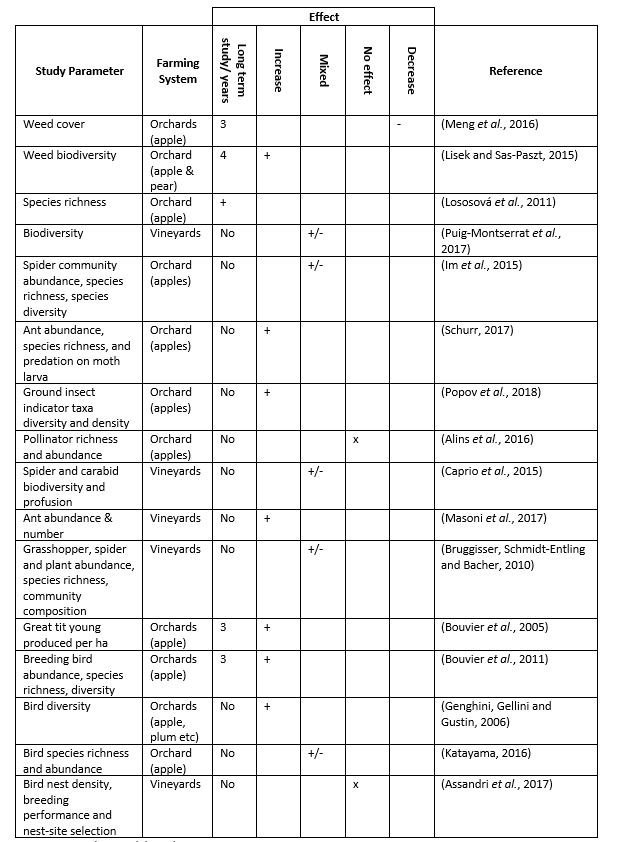
Studies of invertebrate biodiversity in orchard systems show a mixed impact of organic production. Miñarro et al. (2009) looked at the impact of organic and conventional apple production systems with three row management systems (straw mulching, tillage and herbicide) on activity-density and biodiversity of epigeic predators by monthly sampling of pit-fall traps. Tree row management had a greater effect than production system. Mulching produced lower total predator catches, reduced carabid abundance but increased staphylinid catches. Species richness did not significantly differ among row management systems for ants, spiders or the total catches, but was higher on herbicide-treated plots for carabids. The fertilizer application treatment only influenced the species richness of rove beetles, being greater in the chemically-treated plots. Im et al. (2015) found the abundance of spider communities (total number of individuals) was higher in organic apple orchards than in conventional orchards, with no significant difference in species richness and species diversity between orchard type. A Spanish apple orchard pollinator study found there were no significant interactions between the type of management (organic vs. conventional) and the proportion of cultivated area in the number of flower visits by pollinators, fruit set and number of seeds per fruit (Alins et al., 2016).
The type of management (organic vs. conventional) did not affect the community of pollinators. They suggested that the lack of influence of organic management in the abundance of insect pollinators may be due to the relatively small size of the apple orchards compared to the surrounding conventional agriculture.
Dimambro et al. (2018) identified and summarised work on birds in apple orchards. An apple orchard trial in the Netherlands observed greater numbers of caterpillars on organic orchards as compared to Integrated Pest Management (IPM) orchards, even in areas where great tit density was enhanced via the installation of nest boxes (Mols and Visser, 2007): great tits are suggested to be a factor in caterpillar control. In a French study the mean number of blue tit young produced per ha (orchard productivity) was significantly higher in organic orchards than in conventional and IPM orchards (Bouvier et al., 2005). It was suggested that pesticide use in the non-organic orchards reduced the amount of insect prey for the blue tits to feed on. Further French work found bird abundance, species richness, and diversity were all highest in organic orchards and lowest in conventional orchards and the pest control strategy affected insectivorous birds more than granivores (Bouvier et al., 2011) which again would suggest that depletion of prey is a factor. A similar picture was found in a Japanese study with species richness being greater in organic apple orchards than in conventional orchards (Katayama, 2016), but only insectivorous species were more abundant in organic orchards, when compared to granivores and omnivores. A study in northern Italy (Genghini, Gellini and Gustin, 2006) of a range of orchard types (peach, vineyards, kiwi, pear, apricot, cherry, apple, persimmon and plum) and farming systems (conventional, organic and IPM) showed that granivores were the most abundant across all farm systems. Insectivores were less abundant in general, but more abundant on organic and integrated farms. Bird diversity was greater in organic and integrated farms than conventional. It was suggested that the approach to pest control within the different farming systems were the major driver of these differences, but the type of farm and structure of the orchard could also play a part.
Mediterranean systems
The majority of research on organic farming has concentrated on arable and grassland systems in Central and Northern Europe. Relatively fewer studies have been carried out in Mediterranean systems, with particular focus on vine and olive systems. A brief summary of the outcomes of these studies follows.
Vineyards
A study of organic and conventional vineyards in an intensively cultivated area of northern Italy by Nascimbene et al. (2012) showed that organic farming promoted local plant species richness in the vineyards and grassland strips though it had no effect on linear hedgerows. These differences in richness were not associated with species composition suggesting similar plant communities in the vineyards regardless of management.
A study in Catalonia, north-eastern Spain by Puig-Montserrat et al. (2017) into organic and non-organic vineyards studied the vine plots (vascular plants, butterflies, moths and bird) and grass strips between crop lines (only butterflies and vascular plants). Crop treatment was found to have an important effect that was stronger on the more immobile organisms. Organic farms had consistently richer communities of both vascular plants and butterflies and to a lesser extent moths (with the weaker response probably due to insufficient sampling). Birds, the most mobile of the surveyed taxa, showed no significant response to farming system. The grass strips acted as reservoirs of biodiversity. Puig-Montserrat et al. (2017) suggest that organic farming may contribute to halting the widespread decrease of butterflies and other insects in the region.
A study by Katayama et al. (2019) conducted a series of meta-analyses to compare taxon richness, abundance, and community similarity in (semi-)natural habitats and conventional, integrated, organic, and abandoned orchards/vineyards. It also compared fruit/nut yield among the three farming systems. Compared to conventional farming, both integrated and organic farming were similarly effective in increasing taxon richness. This was attributed to the great reduction in pesticide use in these systems (it was suggested that in organic and integrated fruit systems similar levels of pesticides were used) along with the more frequent use of cover crops and mulches. However, organic farming showed greater richness and abundance (+16% and +51%, respectively) but a significantly lower yield (−18%).
A French study (Froidevaux, Louboutin and Jones, 2017) using matched organic and conventional vineyard plots looked at arachnids and bats (model taxa with different functional traits in respect to mobility, dispersal ability and home range size). They found arachnid abundance was higher in organic vineyards, although arachnid species richness was positively associated with the amount of ground vegetation cover. For bat activity and species richness organic farming was ineffective on its own. Their results suggested that landscape features were more important for bats than vineyard management, with significantly higher bat activity recorded on vineyard plots located at close proximity to hedgerows and rivers.
Olives
Biodiversity in organic olives is again an understudied area with very limited evidence published. Álvarez et al. (2019) looked at habitat complexity in organic olive groves. They show that natural enemies are more common in areas with more complex semi-natural habitats. Landscape studies (Martínez-Núñez et al., 2020) on pollinators (in this case solitary bees) in olive orchards showed that organic fields had higher (+53%) bee colonisation rates than non-organic fields regardless of what landscape the orchards were in. A study by Villa et al. (2020) looked at landscape composition on the abundance of olive moth (Prays oleae) in both integrated and organic olive orchards. They concluded that crop management type had no impact on P. oleae abundance which was heavily influenced by landscape composition and complexity. Work by Álvarez et al. (2019) in organic olive orchards supported this: it showed the importance of the presence of ground cover and adjacent vegetation, and overall the benefits of complex adjacent landscapes.
Conclusions
There is now a substantial body of research evidence that demonstrates the positive impacts of organic farming on biodiversity in Europe. While most studies have been conducted in the context of temperate, arable systems, there are an increasing number of studies relating to grassland, horticulture and Mediterranean olive and other systems that also support the general conclusions that:
- Organic farming increases both the abundance and species richness of biodiversity across a range of habitats and farming types, when compared with similar, non-organic systems;
- In arable farming, plant species biodiversity is enhanced both within field (in the crops) and in field margins, with 20-95% more species and 75-150% greater abundance recorded in organic systems, with the greatest differences recorded within fields;
- Soil microbial diversity, insects and bird populations are also positively influenced by organic management. In arable contexts, insect species numbers have been reported at 23% higher, and pollinators 30% higher, on average across a number of studies;
- For grassland, studies have shown more limited benefits for plant and soil microbial biodiversity in permanent grassland, where non-organic management tends also to be less intensive;
- Temporary grassland, normally grass/clover leys or lucerne, may be dominated by a limited range of sown species, but will have more unsown species, and the use of flowering legumes can benefit pollinators if managed appropriately – the contribution of organic matter in the rotation also has positive impacts on soil microbial diversity and earthworms;
- In horticulture greater diversity is found within fields as for cultivated arable crops, but also in the understoreys of fruit production systems, with insectivorous bird species also benefitting;
- Relatively few studies have been conducted in Mediterranean olive and vine systems, with some showing benefits, but landscape effects also being important.
The results generally support the EU Organic Action Plan statement that organic farming delivers 30% more biodiversity on average. Given the focus of much of the research on temperate arable systems, there is a need to extend research to cover other land uses and regions, and to focus more on understanding how the benefits recorded are derived and can be enhanced, with the information communicated to farmers in the context of advisory and training programmes.
